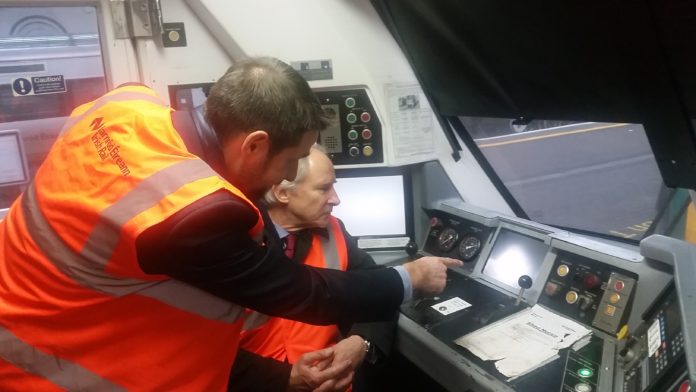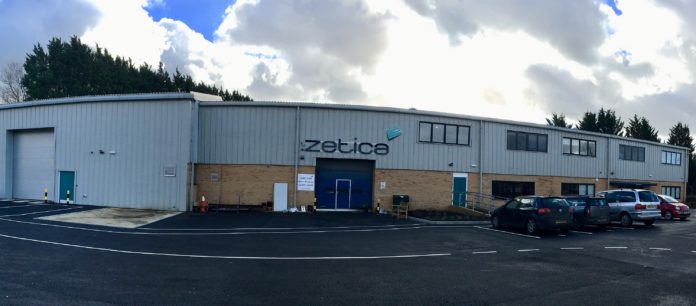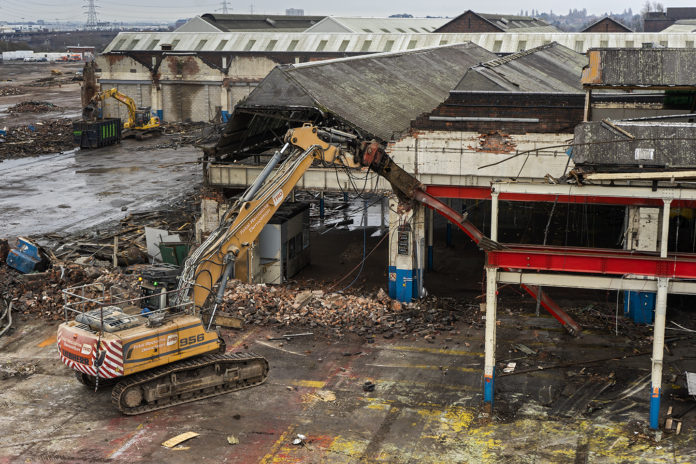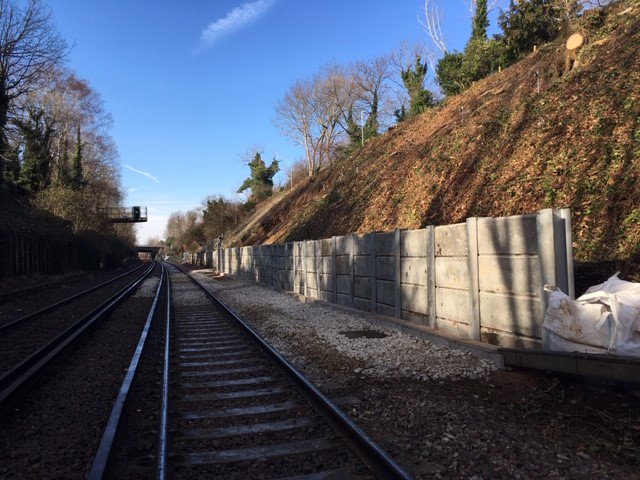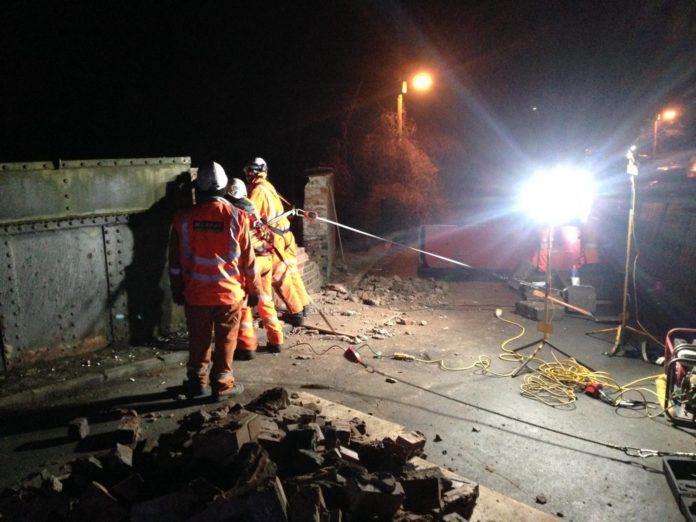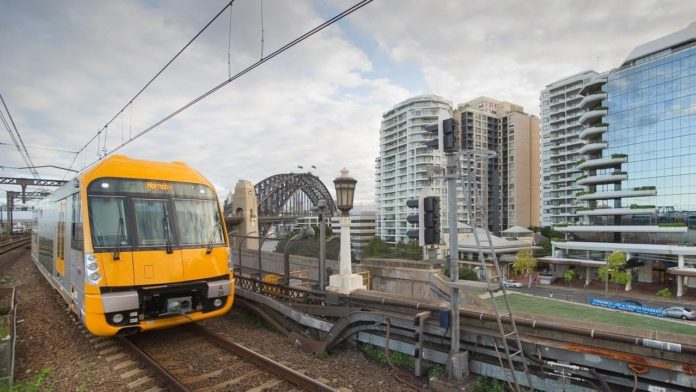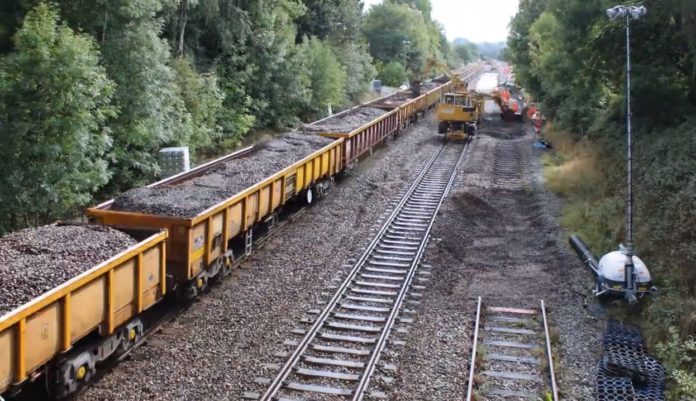Above – CPC commercial manager John Mogridge and Egis systems integration lead François Pignard looking at the in-cab display for the Iarnród Éireann Train Protection System. (CPC Project Services)
Turas, a joint venture between CPC Project Services (CPC), Deutsche Bahn and Egis, has been appointed by Irish Rail (Iarnród Éireann) to deliver a new train protection system across its network.
More than 50 per cent of the Irish network currently has no automatic train protection, and the existing train protection systems that are in operation – Continuous Automatic Warning System (CAWS) and Automatic Train Protection (ATP) – are nearing the end of their life expectancy.
The newly announced programme, which will take seven years to deliver, will result insafety and reliability improvements for the 45 million passengers that travel on the network each year.
The Turas joint venture, which was appointed in January 2019 following a competitive OJEU selection process, will act as Irish Rail’s delivery partner, providing a range of consultancy and technical services including project and programme management, commercial and cost management, systems integration and safety case management.
The new Train Protection System (TPS), which will be deployed across the network over the next seven years, will be a hybrid system based on the existing CAWS and ATP systems and ETCS (European Train Control System) Level 1. It will provide automatic train stop, set train-regulated line speed and ensure compliance with speed restrictions.
CPC programme manager Tim Cooper said: “We are delighted to bring to Irish Rail our extensive experience of delivering modern signalling systems, as they embark on this major infrastructure upgrade. This appointment marks an important milestone for CPC as we seek to become a key supplier to the European rail sector.”


